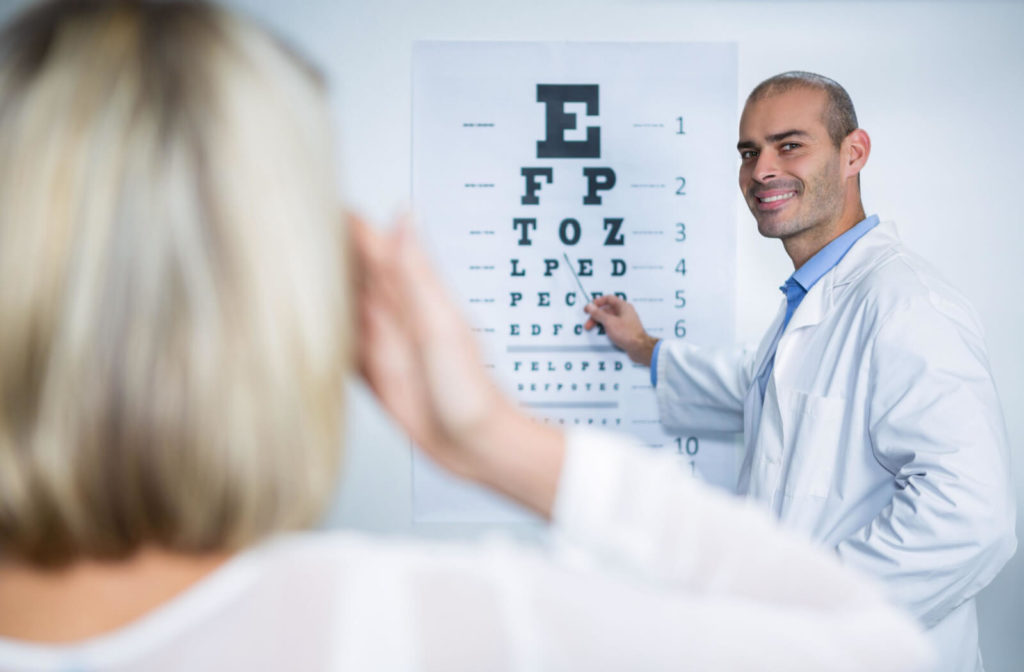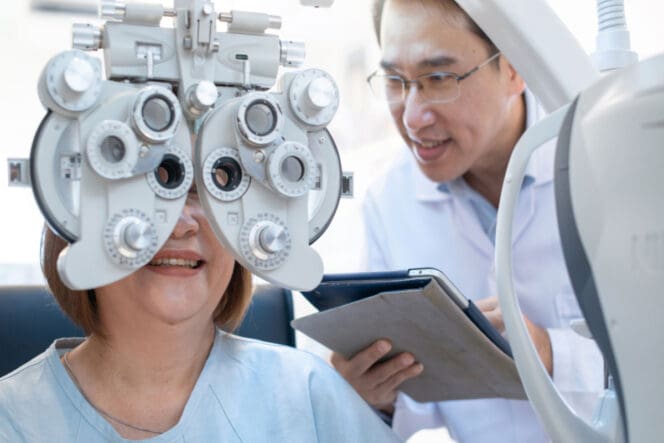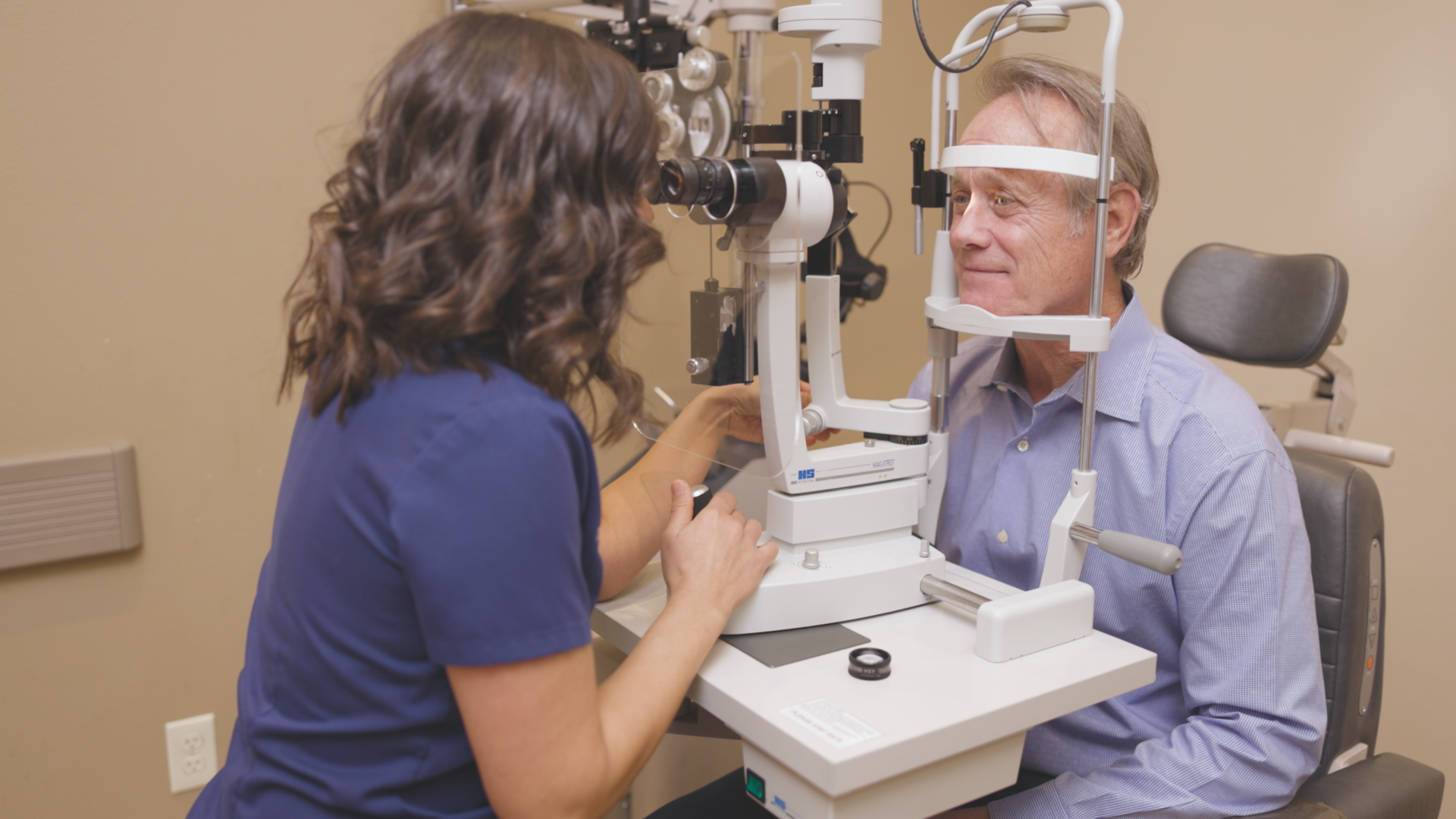How an Eye Doctor Can Help Avoid Vision Problems in Chino
How an Eye Doctor Can Help Avoid Vision Problems in Chino
Blog Article
Exploring the most recent Technological Developments in Optometry and What They Mean for Eye Doctors
From the accuracy of Optical Coherence Tomography to the nuanced insights supplied by AI-driven diagnostic devices, these innovations are establishing new standards in person evaluation and therapy. As these improvements penetrate the method, optometrists are encountered with the obstacle of embracing these devices to boost patient results.
Innovations in Diagnostic Tools
Progressing the field of optometry, innovations in diagnostic devices have actually reinvented the method eye treatment experts analyze and diagnose visual disabilities and ocular conditions. The previous years has seen significant technological innovations, enabling even more accurate and extensive assessments. Optical Comprehensibility Tomography (OCT), for instance, offers high-resolution cross-sectional pictures of the retina, enabling the very early detection of illness such as glaucoma and age-related macular deterioration. This non-invasive imaging strategy has come to be vital in modern optometric practice.
An additional secret development is the introduction of sophisticated corneal topography systems, which map the surface curvature of the cornea with precision. These tools are particularly useful for suitable call lenses and detecting corneal problems. Furthermore, digital retinal imaging has actually transformed standard ophthalmoscopy, providing detailed, panoramic sights of the retina that assist in comprehensive visual assessments.
The growth of wavefront aberrometry has actually also been essential, enabling the analysis of refractive mistakes with unequaled precision (Eye Doctor Optometrist). This technology helps in customizing rehabilitative lenses and boosting surgical results for refractive surgical procedures. Jointly, these analysis innovations encourage eye doctors to deliver exceptional client treatment, guaranteeing very early intervention and customized treatment approaches, inevitably boosting aesthetic health and wellness end results
AI in Person Administration
Building on the foundation of sophisticated analysis devices, the consolidation of expert system (AI) in person monitoring stands for a transformative jump for optometry. AI systems are increasingly employed to boost effectiveness, accuracy, and personalization in client treatment. By assessing large amounts of data, AI can recognize patterns and anticipate prospective ocular conditions, enabling optometrists to customize treatments better. This ability is important in managing persistent eye conditions such as glaucoma and diabetic person retinopathy, where early detection and continual monitoring are crucial.
In addition, AI-driven systems facilitate streamlined client interactions and management procedures. Automated organizing, virtual examinations, and customized follow-up strategies not only improve client fulfillment yet additionally optimize time management for specialists. These systems can triage clients based on the necessity of their problems, making certain that those in vital demand get prompt attention.
Furthermore, AI boosts decision-making by offering eye doctors with evidence-based referrals and therapy pathways. By incorporating data from digital health documents, AI tools provide insights that notify scientific decisions, minimizing the danger of errors and enhancing patient end results. As AI proceeds to evolve, its role in client monitoring will likely broaden, reshaping the landscape of optometric treatment.
Advancements in Retinal Imaging
In the realm of optometry, retinal imaging has actually seen impressive technical advancements that are boosting analysis capabilities and patient care. Technologies such as Optical Comprehensibility Tomography (OCT) and fundus digital photography have revolutionized just how eye doctors examine the retina and visualize. OCT, particularly, gives high-resolution, cross-sectional photos of the retina, allowing for the detailed assessment of its layers. This capacity is very useful for very early discovery and administration of conditions like glaucoma, diabetic person retinopathy, and age-related macular degeneration.
Improved imaging modalities like OCT angiography are more refining diagnostic precision. This non-invasive strategy maps blood flow in the retina, providing important understandings right into vascular health and wellness without the demand for dye shots. Additionally, adaptive optics innovation is being incorporated into retinal imaging systems to fix eye aberrations, providing unmatched photo quality. Such improvements facilitate the recognition of min retinal adjustments that could symbolize disease progression.
Moreover, advancements in expert system are boosting retinal imaging by making it possible for computerized evaluation of huge datasets. These systems help eye doctors in determining patterns a measure of pathology, consequently improving diagnostic accuracy and performance. Jointly, these developments are transforming retinal imaging into a foundation of modern eye care, improving results and increasing restorative possibilities.
Teleoptometry's Expanding Duty
Teleoptometry is progressively coming to be a vital element of eye care, driven by innovations in digital interaction and analysis tools. As optometry like it embraces digital transformation, teleoptometry promotes remote appointments, permitting eye doctors to expand their solutions beyond standard boundaries. This is especially beneficial in rural and underserved locations where accessibility to specialized eye care is typically restricted. By leveraging high-resolution video conferencing and advanced retinal imaging, optometrists can conduct thorough eye examinations from afar, guaranteeing prompt diagnosis and therapy.
The combination of man-made intelligence (AI) additional enhances teleoptometry, allowing the analysis of aesthetic information and helping in the discovery of eye conditions such as glaucoma and diabetic person retinopathy. AI-powered formulas can rapidly analyze complex imaging data, offering optometrists with useful understandings that strengthen clinical decision-making.
Furthermore, teleoptometry supports continuity of treatment through smooth combination with electronic wellness records (EHRs), enabling optometrists to preserve helpful hints extensive individual histories. When seeking advice from with various professionals., this guarantees that people obtain tailored and constant treatment even.
Regardless of these benefits, challenges remain, including making certain data security and handling person expectations. Teleoptometry represents a substantial stride in the direction of even more accessible, reliable, and patient-centered eye treatment. As technology evolves, its duty is positioned to expand additionally.

Future Fads in Eye Treatment
A myriad of ingenious patterns is readied to reshape the future of eye treatment, driven by technical advancements and the evolving needs of people. One significant fad is the integration of artificial intelligence (AI) in diagnostics, which promises to boost the accuracy and effectiveness of eye evaluations. AI algorithms can evaluate huge amounts of data from retinal pictures, possibly finding problems like diabetic retinopathy and glaucoma earlier than traditional methods.
Furthermore, personalized medication is acquiring grip in optometry, with genetic testing notifying personalized therapy strategies. This technique intends to optimize person end results by customizing treatments to specific hereditary accounts. Wearable innovation, such as wise get in touch with lenses, is additionally imminent, providing real-time monitoring of intraocular pressure or sugar degrees, thus supplying continuous understandings into systemic and eye health and wellness.
The adoption of enhanced fact (AR) and digital fact (VIRTUAL REALITY) in training and patient education and learning is one more emerging trend. These modern technologies offer immersive experiences that can enhance understanding and skills continue reading this both for individuals and eye doctors. As these trends develop, optometrists have to stay abreast of technological innovations to offer advanced treatment, ensuring enhanced patient results and satisfaction in the vibrant landscape of eye treatment.
Conclusion

Jointly, these diagnostic advancements equip optometrists to provide superior client treatment, making sure early intervention and tailored treatment methods, inevitably boosting aesthetic health end results.

As these modern technologies proceed to develop, eye doctors should adjust and incorporate them into technique, eventually enhancing workflow efficiency and raising the requirement of eye care delivered to clients.
Report this page